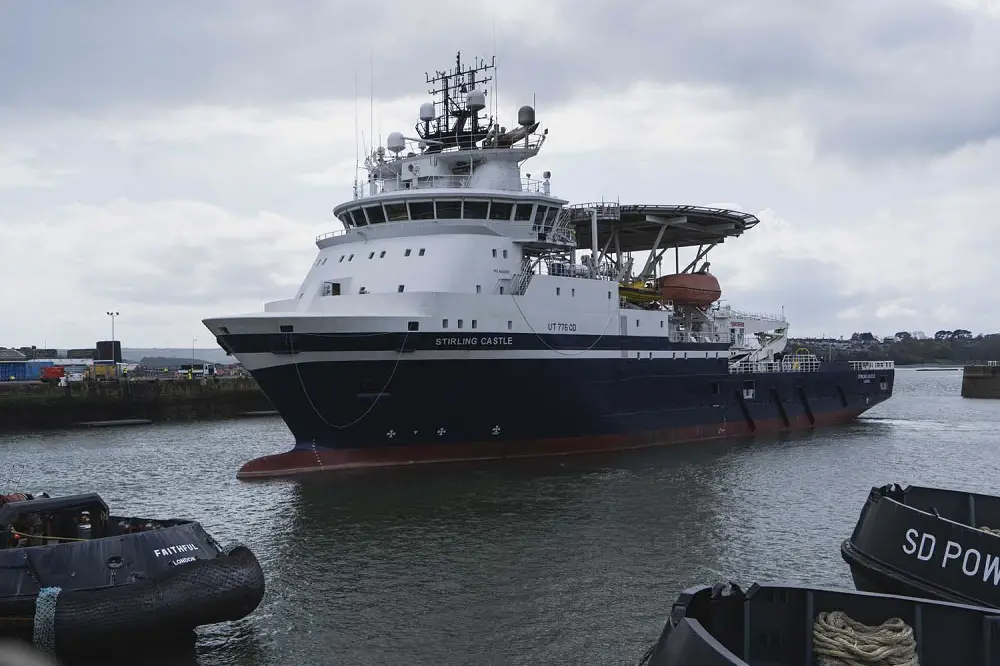Three months after she arrived in Devonport as MV Island Crown, the UK’s new minehunting mother ship – now RFA Stirling Castle – is nearing the end of her military conversion. When operational, she will serve as the command centre for and home to Royal Navy mine warfare specialists and their hi-tech equipment. They will focus on safeguarding UK waters in particular, while Royal Fleet Auxiliary personnel focus on running and maintaining the ship herself. Here she’s undergoing a spot turn – a simple turn under her own power using her thrusters, no tugs – in Basin No.3.

The vessel arrived at HMNB Devonport on 29th January where it will now undergo limited conversion work, before being renamed and handed over to the Royal Fleet Auxiliary (RFA) later this year. The 96.8 metre long ship – the length of two Olympic swimming pools – has been delivered at pace due to the rapidly evolving threat posed by naval mines and the need for effective measures. Operated by specialist teams on board these innovative systems will allow the Royal Navy to meet the offshore operational requirements for UK homeland defence, and in the North Atlantic and European waters if required.
Replacing traditional mine countermeasures vessels, Stirling Castle will instead harness the white heat of technology, using a series of uncrewed systems (the joint French-UK Maritime Mine Counter Measures (MMCM) system, the Combined Influence Sweep (SWEEP) system and Medium Underwater Autonomous Vehicles (MAUVs)) to locate, identify and neutralise mine threats. Her first ship’s company have already completed their first three-month stint aboard; as with existing minehunters and patrol ships, the intention is to rotate the entire crew every few months so that Stirling Castle will be available for operations as much as possible.















